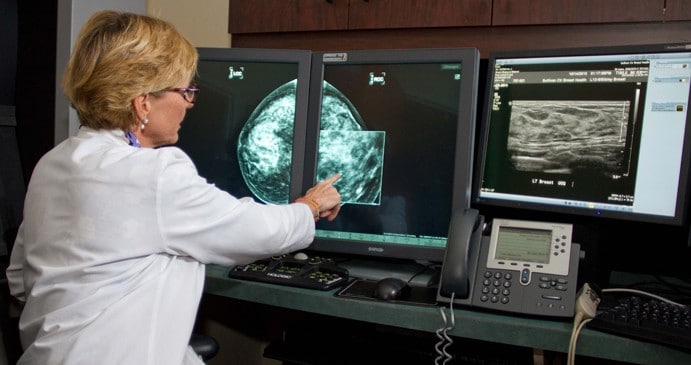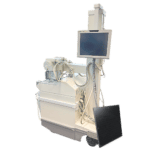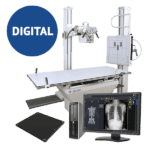Our findings indicate that current safety practices for medical radiation workers are successful in controlling exposures

According to an analysis of a database study, for radiologists who graduated after 1940 there is no increased risk of radiation related mortality.
Comparing cancer incidence and mortality to that of psychiatrists (those considered to be least likely to be exposed to radiation during practice,) the study included 43,763 non-interventional radiologists and 64,990 psychiatrists who graduated between 1914 and 2008.
Surprisingly, the results were different than you’d expect. Male radiologists made up only 12 percent of the deaths whereas psychiatrists made up 16 percent. Overall cancer-mortality rates were similar however, according to Amy Berring de Gonzalez, DPhil, of the National Cancer Institute in Bethesda, Md., and colleagues.
Radiologists were more likely to die of acute myeloid leukemia and/or myelodysplastic syndrome, an excess driven primarily by those graduating before 1940, likely due to occupational radiation exposure, the authors noted.
The radiologists who graduated pre-1940 had increased death rates from melanoma, non-Hodgkin lymphoma, and cerebrovascular disease.
Berrington de Gonzalez explained to MedPage Today that “Our findings indicate that current safety practices for medical radiation workers are successful in controlling exposures so as to minimize cancer risks. There are some specialist groups, however, where exposure has been increasing, including cardiologists and nuclear medicine techs. Further study of these populations is necessary.”
3,000 radiologists who are currently younger than 70 were included in the study cohort. The duration of radiation exposure that served as proxy measure was the year of medical school graduation plus one year.
“Most of the findings of increased risk were in the earlier radiologists,” Linet pointed out. From 1979 to 2008 a follow up occurred, and was limited to deaths that occurred before age 85 to improve reliability of cause of death. In order to calculate relative risks and confidence intervals for all causes and specific causes of death, poisson regression was used.
The American Medical Association Physician Masterfile includes every physician that’s practiced in the U.S. since 1902 and is where the study cohort was drawn from. The reason interventional radiologists were excluded from the study was to allow for their inclusion in a separate study of physicians who perform fluoroscopically guided procedures.
Stratification according to birth year (5 year categories) and sex ensured at least a 1:1 ratio (psychiatrists:radiologists) in each strata. 20% of the radiologists represented were women, whereas 27% were psychiatrists. The study chose to focus on male radiologists because only a small number of women (208 deaths) were represented. Also noted is that there were no death increases in female radiologists in comparison with female psychiatrists, while total cancer risks were similar.
Get Started
Request Pricing Today!
We’re here to help! Simply fill out the form to tell us a bit about your project. We’ll contact you to set up a conversation so we can discuss how we can best meet your needs. Thank you for considering us!
Great support & services
Save time and energy
Peace of mind
Risk reduction
Overall, radiologists, in comparison to the psychiatrists, were slightly younger and more likely to have graduated from medical school in 1960 or later. Risks of cancer mortality in those who graduated after 1940 for all solid cancers, hematologic malignancies, or site-specific solid cancers were not significantly increased.
Jennifer Kemp, MD, of Diversified Radiology of Colorado in Lakewood, commented to MedPage Today that in terms of both the size of cohort and the large time period it covers, the study design is excellent.
Some study limitations were found and acknowledged by the authors. These include a lack of data on whether a physician currently practiced medicine, a lack of data on lifestyle factors, and a lack of individual occupational radiation doses.
However, Kemp was not involved in the researchand pointed out that “for a study to include data on physicians current practice, lifestyle factors, and/or individual occupational radiation doses, we would lose the volume of radiologists and psychologists included in this cohort and the length of the time period evaluated would not be as long.”
The authors stated that ongoing research is important to determine the adequacy of protection measures, given that the estimated 2.3 million medical radiation workers account for about half of the workforce exposed to man-made sources of radiation. It was noted that current protective measures including lead shielding of equipment, personal used of lead aprons, thyroid shields and glasses, and use of room shields (just to name a few,) have contributed to decreases in occupational radiation exposures.
Also pointed out is decreases in the maximum permissible occupational dose have been established. For example, in the U.K., the mean annual dose for radiologists decreased from 5 mGy in 1964 to 0.5 mGy in 1984. Mean annual doses for U.S. radiologists from 1972 to 1978ranged from 3.6 to 0.7 mGy, although this may be due in part to the fact that radiologic technologists rather than radiologists now perform a large proportion of radiologic examinations.
“The results of this study strongly suggest that our efforts to improve radiation protection are paying off,” Kemp commented. “With that said, given the ongoing debates in regard to true risks from low-dose radiation exposure, it makes sense that our goal should be to continue to decrease occupational radiation exposure. The best possible occupational exposure would be no exposure.”



